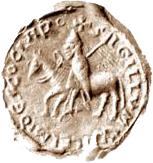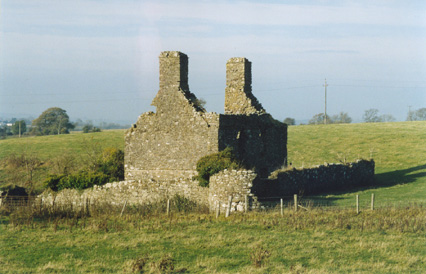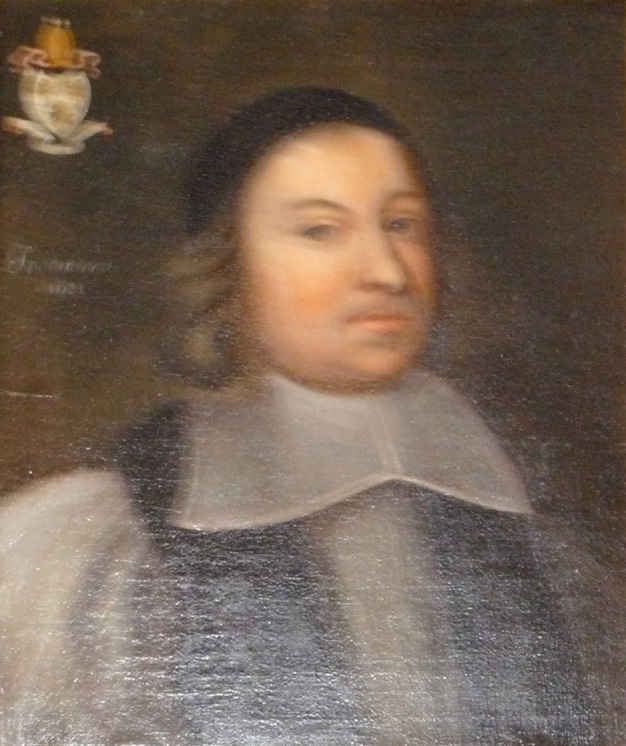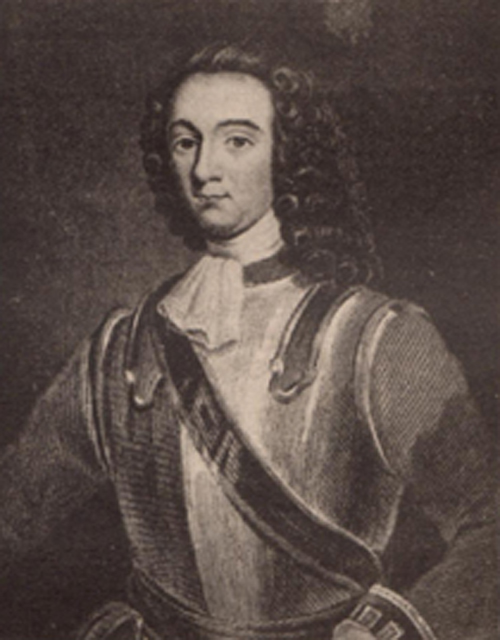Newton Manor Court
William Sinclair of Rosslyn arrived in Ireland about 1620 as one of three principal undertakers for the plantation of Ely O’Carroll country. He had received 1000 acres of pasture and woodland on the lower slopes of the Slieve Bloom mountains, close to the Sli Dala, an ancient road from Tara to Cashel. A few years earlier, after his defeat at Kinsale in 1601, O’Neill and his troops used this route as Carew and the English forces followed them back to Ulster.
All plantation undertakers were given strict instructions by king James as to what they had to do in return for their land. William had to build a house, live on his property, and populate it with Scottish or English settlers. The ruins of his house, Newton Manor Court, were discovered not far from the town of Birr in Co. Offaly, previously known as Parsonstown, several years ago. The building followed the prescribed plan set down by king James:
every undertaker and native of 1000 acres, should be bound within three years to build a castle, of 30 foot in length, and 20 ft in breadth, and 25 feet in ht of stones or brick with lime, and encompassed with a baune of ston, or brick, with lime … And every proportion of 1000 acres to have a Manor with Court Baron and Leet…
It is unlikely that William and his wife and family lived at Newton Manor Court. Conditions were tough enough in Scotland if you were moderately wealthy, but it would have been much more difficult on the Slieve Bloom mountains, many hours away from the relative comfort and safety of Dublin. It is more likely that he employed an agent to build the house and look after the land.
In 1627, William sold his plantation holdings to Thomas Roper, kt. The Crown had made it clear that it would not allow undertakers to sell their plantations to other undertakers to prevent the ownership of land being consolidated in a few hands. Still, a year later, in 1628, Roper sold William’s estate to Sir Lawrence Parsons, who was one of the other three principal undertakers in Ely O’Carroll. Newton remained in the hands of the Parsons family from that time until 1922.
What happened to William and his family after 1627 is only now becoming clear, thanks to the publication of the findings of the 1622 Commission into plantations in Ireland. Whilst he was holding Newton Manor, William settled his family on the townland of Mullamore in another plantation at Ballyloughmaguiffe in Co. Tyrone. Why he did this is is not known, but it could be that he was ‘hedging his bets’. Conditions in Ely O’Carroll were very unsettled and he may have been looking for greater security for his wife and children. Mullaghmore may have come to his attention because James Spottiswoode, his daughter-in-law’s uncle, had recently become the bishop of nearby Clogher. In the Commission’s certificates, William was recorded as living at Mullaghmore. His eldest son, George Singcleare, was listed in the Muster Roll of Co. Tyrone in 1630; William had probably died by then. His wife remarried but wasn’t to live many more years, because the following inscription was recorded on her gravestone at St. Macartan’s Cathedral, Clogher:
Hereunder lieth the body of that godly and vertuous woeman Jeane Sincler, the wife of Thom(as) Cairnes of Parsonstowne who departed this life 7 of December 1634.
Some 400 years after William Sinclair had Newton Manor Court built, Brendan Parsons, the current Earl of Ross, with the help of Peter Sinclair, the great great grandson of William Sinclair of Newry, purchased Newton Manor Court from the local farmer to save the ruins from further deterioration.



